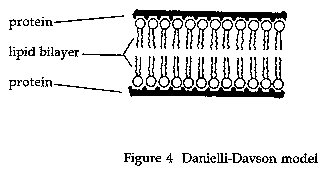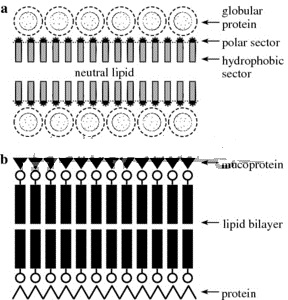Membrane Models
Membrane Models Assignment Help | Membrane Models Homework Help
Membrane Models
In an attempt to explain the physical and biological features of cell membrane two main categories of hypotheses have been proposed, the bilayer models and the micellar or subunit models.A. Bilayer Models
I. Lipid membrane.
The intact cell had low electrical conductivity, indicating a lipid layer. The existence of a lipid layer was confirmed on the basis of a lipid layer. The existence of a lipid layer was confirmed on the basis of experiments on wetting the cell surface with oil. The first to suggest a possible structure of the cell membrane. They studied erythrocytes and found that the surface membrane was composed of a double layer of lipid molecules. The polar groups of these molecules were situated on the outside of these layers.
II. Protein-lipid-protein (sandwich models)
1. Danielli-Davson model
To propose a lipoprotein model of the cell membrane. According to this model the bimolecular lipid layer is similar to that proposed by Gorter and Grendel. It consists of two layers of molecules with their polar regions on the outer side. Globular proteins are thought to be associated with the polar groups of the lipid.
2. The Unit Membrane
The basic unit membrane structure was considered to be general for a wide variety of plant and animals cells. Membranes of cell organelles like mitochondria and lysosomes, and other cell membranes like those of the Golgi complex, the nuclear envelope and the endoplasmic reticulum were thought to have the unit membrane structure, indicating its cellular university.
3. The greater membrane model
This model resembles the trilaminar model is that a lipid layer is sandwiched between two layers of structural proteins. Robertson, however, believed that the inner and outer surfaces of the membrane were different. The internal surface of the membrane was thought to be covered with unconjugated protein.4. Kavanau’s lipid pillar model.
The lipid layer exists in two forms. Under certain condition it is in the form of pillars, while in other it is in the form of flattened discs. The space between the pillars forms pores for the passage of ions. The membrane with pillar structure is thicker than the membrane with the disc structure.B. Micellar Models
Corpuscular nature of membrane structure and the repeating unit concept.
Two types of membranes are distinguished, monopartite and multipartite. In monopartite membranes the repeating units do no have any projections. Multipartite repeating units include macrotripartite and microtripartite units.The bilayer and the micellar hypotheses: a summation
Electoron microscope studies have provided support for both the bilayer structure and the micellar (subunit) structure. Electron micrographs have clearly revealed the three layers of the unit membrane. Distortions resulting from preparation techniques could apply to either case. A possible explanation is that different membranes may show different types of structure, or that there maybe transformation between the bilayer and the micellar states.For more help in Membrane Models please click the button below to submit your homework assignment.